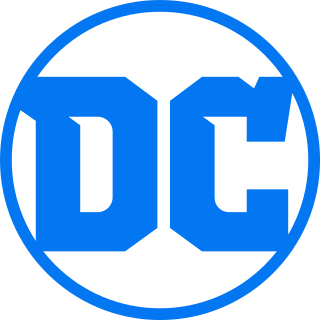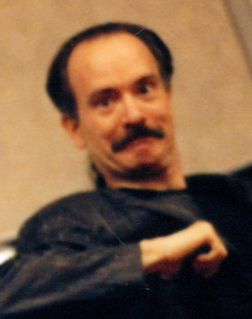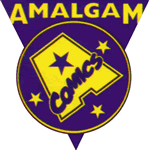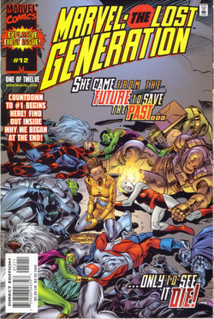Overview
The six-issue limited series Steeltown Rockers showcased the efforts of guitarist Johnny Degaestano and his friends to form and maintain a band in a former steel mill town that had become economically depressed since the shuttering of the mill. The series depicted the perseverance of the musicians as they not only put together the band, sought bookings, and dealt with intragroup personality conflicts but also faced such obstacles as alcoholism, poverty, racial and socioeconomic tension, and drug abuse. Uncommonly for a Marvel comic at that time, the comic featured no superheroes, no super-villains, and no extraordinary powers of any kind, focusing solely on the lives of ordinary people. The series presented this material more realistically than was then common, while also showing its characters as neither categorically "good" nor "bad."

A steel mill or steelworks is an industrial plant for the manufacture of steel. It may be an integrated steel works carrying out all steps of steelmaking from smelting iron ore to rolled product, but may also describe plants where steel semi-finished casting products are made, from molten pig iron or from scrap.
Playwright, actress, and comics colorist Elaine Lee wrote the series, which was pencilled and frequently inked by Steve Leialoha.
A playwright or dramatist is a person who writes plays.
In comics, a colorist is responsible for adding color to black-and-white line art. For most of the 20th century this was done using brushes and dyes which were then used as guides to produce the printing plates. Since the late 20th century it is most often done using digital media, with printing separations produced electronically.
Elaine Lee is an American actress, playwright, producer, and writer, who specializes in graphic novels. She has also received recognition and awards for her work as a creator and producer of audio books and dramas.

DC Comics, Inc. is an American comic book publisher. It is the publishing unit of DC Entertainment, a subsidiary of Warner Bros. since 1967. DC Comics is one of the largest and oldest American comic book companies, and produces material featuring numerous culturally iconic heroic characters including: Superman, Batman, Wonder Woman, The Flash, Green Lantern, Martian Manhunter, Nightwing, Green Arrow, Aquaman, Hawkman, Cyborg and Supergirl.

Captain Marvel is the name of several fictional superheroes appearing in American comic books published by Marvel Comics. Most of these versions exist in Marvel's main shared universe, known as the Marvel Universe.

The Infinity Gauntlet is an American comic book published by Marvel Comics. The story, written by Jim Starlin and pencilled by George Pérez and Ron Lim, was first serialized as a six-issue limited series from July to December 1991. As the main piece of a crossover event, some plot elements were featured in tie-in issues of other Marvel publications. Since its initial publication, the series has been reprinted in various formats and editions.

Who's Who: The Definitive Directory of the DC Universe is the umbrella title for a number of comic book series which DC Comics published to catalogue the wide variety of fictional characters in their imaginary universe, the DC Universe.
The Official Handbook of the Marvel Universe is an encyclopedic guide which details the fictional universe featured in Marvel Comics publications. The original 15-volume series was published in comic book format in 1982, followed by sporadic updates.

Mark Eugene Gruenwald was an American comic book writer, editor, and occasional penciler known for his long association with Marvel Comics.

Nelson Alexander Ross is an American comic book writer/artist known primarily for his painted interiors, covers, and design work. He first became known with the 1994 miniseries Marvels, on which he collaborated with writer Kurt Busiek for Marvel Comics. He has since done a variety of projects for both Marvel and DC Comics, such as the 1996 miniseries Kingdom Come, which Ross co-wrote. Since then he has done covers and character designs for Busiek's series Astro City, and various projects for Dynamite Entertainment. His feature film work includes concept and narrative art for Spider-Man and Spider-Man 2, and DVD packaging art for the M. Night Shyamalan film Unbreakable. He has done covers for TV Guide, promotional artwork for the Academy Awards, posters and packaging design for video games, and his renditions of superheroes have been merchandised as action figures.
Transformers is a Japanese–American media franchise, produced by Japanese toy company Takara Tomy and American toy company Hasbro. Initially a line of transforming mecha toys rebranded from Takara's Diaclone and Microman toylines, the franchise began in 1984 with the Transformers toy line, and centers on factions of self-configuring modular extraterrestrial robotic lifeforms in an endless civil war for dominance or eventual peace. In its history, the Transformers robot superhero franchise has expanded to encompass comic books, animation, video games and films.

Amalgam Comics was a publishing imprint shared by DC Comics and Marvel Comics, in which the two comic book publishers merged their characters into new ones. These characters first appeared in a series of 12 comic books which were published in April 1996, between the third and fourth issues of the DC vs. Marvel miniseries. A second set of 12 comic books followed one year later in June 1997.All 24 of these issues occurred between the aforementioned third and fourth issues of DC vs. Marvel.

Not Brand Echh is a satiric comic book series published by Marvel Comics that parodied its own superhero stories as well as those of other comics publishers. Running for 13 issues, it included among its contributors such notable writers and artists as Stan Lee, Jack Kirby, Gene Colan, Bill Everett, John and Marie Severin, and Roy Thomas. With issue #9, it became a 68-page, 25¢ "giant", relative to the typical 12¢ comics of the times. In 2017, a 14th issue was released.
There have been three main publishers of the comic book series bearing the name Transformers based on the toy lines of the same name. The first series was produced by Marvel Comics from 1984 to 1991, which ran for 80 issues and produced four spin-off miniseries. This was followed by a second volume titled Transformers: Generation 2, which ran for 12 issues starting in 1993. The second major series was produced by Dreamwave Productions from 2002 to 2004 with multiple limited series as well, and within multiple story continuities, until the company became bankrupt in 2005. The third series is currently being produced by IDW Publishing starting with an issue #0 in October 2005 and a regular series starting in January 2006. There are also several limited series being produced by IDW as well. In addition to these three main publishers, there have also been several other smaller publishers with varying degrees of success.

G.I. Joe has been the title of comic strips and comic books in every decade since 1942. As a licensed property by Hasbro, G.I. Joe comics have been released from 1967 to present, with only two interruptions longer than a year. As a team fighting Cobra since 1982, the comic book history of G.I. Joe: A Real American Hero has been covered by three separate publishers and four main-title series, all of which have been based on the Hasbro toy line of the same name.
In comic books, a variant cover refers to an issue of a comic book printed with multiple covers, each with unique cover art. The first comic book marketed with a variant cover was the 1986 first issue of The Man of Steel, which featured two different covers by writer/artist John Byrne. Variant covers became more common during the "speculator boom" of the 1990s, when more collectors became interested in the storage and preservation of their comic books with the goal of future financial gain rather than reading the comics themselves.

The Blazing Skull is a fictional character appearing in American comic books published by Marvel Comics. The character was created during the Golden Age of Comic Books by Marvel's predecessor, Timely Comics, and first appeared in Mystic Comics # 5. The character's writer and artist creators are unknown. The Blazing Skull fell into obscurity after the 1940s, and was revived in the 1990s.

Marvel: The Lost Generation is a twelve-issue comic book limited series published by Marvel Comics in 2000 and 2001. The series was scripted by Roger Stern and drawn by John Byrne with both as co-plotters. Numbered in reverse order, it began with issue #12 and finished with issue #1.
Comic books have been an integral and popular part of the American rock group Kiss' merchandising since 1977, beginning with their appearance in Marvel Comics' Howard the Duck #12. Over their career of nearly four decades, Kiss has licensed their name to "more than 3,000 product(s). .. to become nearly a one-billion-dollar brand."

The Destroyer is the name of three fictional superheroes appearing in American comic books published by Marvel Comics. One of the earliest creations of major comics-industry figure Stan Lee, the original incarnation first appeared in the 1940s during what historians and fans call the Golden Age of comic books. Modern incarnations created by Roy Thomas and Frank Robbins appeared in Invaders #18, and Invaders #26. The Official Handbook of the Marvel Universe clarifies that all three versions of the character are considered canon.

Marvel Legacy is a 2017–18 relaunch of a line of American comic books published by Marvel Comics. It is concurrent with All-New, All-Different Marvel and Marvel NOW! 2.0.


















